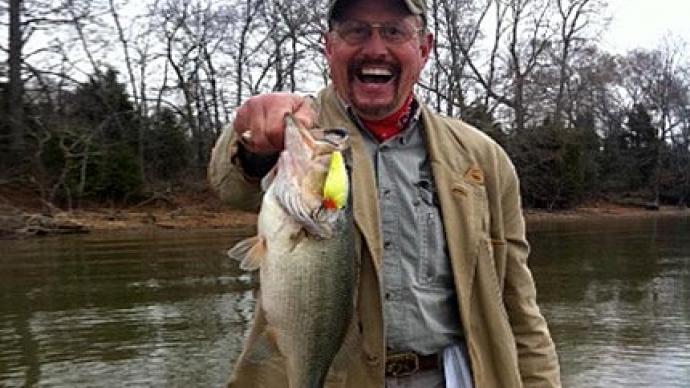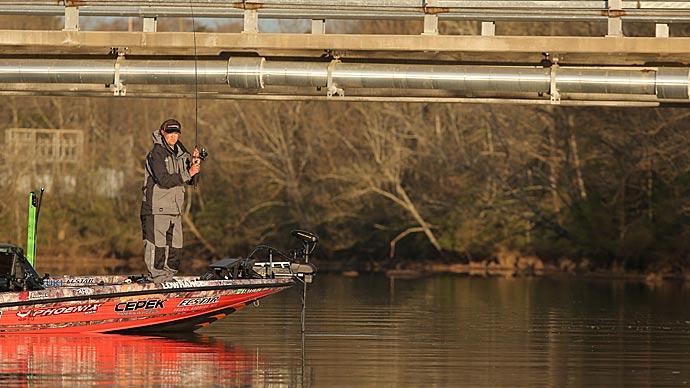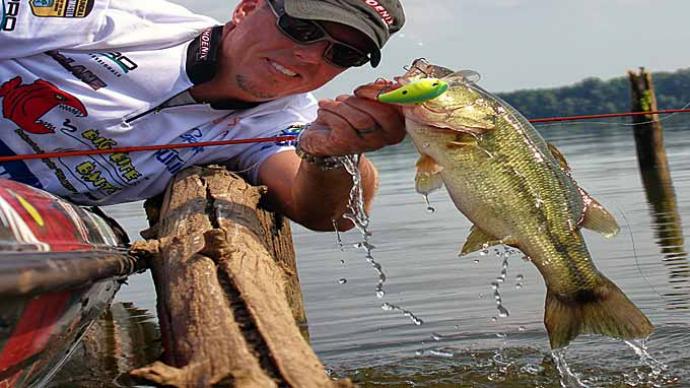The amount of quality tackle available to the bass angler is sometimes baffling. If you are like me, you want to try it all. If you keep everything in your boat or tackle bag, it doesn't take long before your tackle is unmanageable.
Crankbaits are among the hardest to manage with all the hooks and the upkeep crankbaits require. I change to high-quality hooks and keep them sharp for instant use. Crankbaits should be tuned to run straight to be effective. It is almost impossible to keep hundreds of crankbaits in top condition, and the rain of the Pacific Northwest compounds this problem. Rusty hooks are a never-ending problem. For the tournament angler, all this could affect your decision-making process. Let me explain that a little. What do you do if the angling situation calls for a certain size and color of crankbait and yours are not tuned or in poor repair? You have to take the time to replace or sharpen hooks and maybe replace split rings or fish with them as is, which is always a bad choice. The other options are to fish with another choice or not use a crankbait. You have wasted time or altered your decision on what lure would be effective.
I recently found myself in this position and returned to the basics with crankbaits.
First, you don't always need hundreds of crankbaits in the boat with you. I use three 8 x 11 plastic boxes for my crankbaits—one for shallow and small cranks, one for medium cranks, and the last for deep cranks. I stock them with my confidence baits and substitute based on my next fishing location and what I think will be the best producers for that particular body of water. I carry a larger assortment in my truck if I am on the road for an extended period.
I stay with three basic colors of cranks in all sizes. Crawdad, shad, and chartreuse variations will meet almost all angling situations. You don't need every color under the rainbow, and I believe you will catch more if you stay with the basic colors. Base your color selection on the predominant forage for that water. I like chartreuse cranks in off-colored water and low-light conditions.
I use G-Loomis cranking series rods for all of my crankbait fishing. Most graphite rods tend to be stiff and react too quickly for crankbaits. Many anglers have returned to glass rods for crankbaits for these reasons. G-Loomis has captured the qualities of fiberglass in a graphite rod series. They have the softer, slower action of glass with the sensitivity and lightness of graphite and capture the best of both materials. They are a pleasure to fish and do not tire you like glass rods.
Line size is dictated by the fishing situation you are in. Most times, I will use 10- or 12-pound test. Most anglers will use light line to help gain more depth on a deep running lure, but turn around and use the same light line for shallow running lures in heavy cover. A heavy line can keep a shallow running crankbait even more shallow and give you the advantage of helping to control the bass in and around heavy cover. Many times I use 14 to 17-pound test line for shallow cranks. Crankbaits, for the most part, are easy to fish. It is one lure you can throw out and just reel it in and catch some fish. There are some basic things that you can do with crankbaits to improve your catch, and I see even experienced anglers ignoring these basics.
A crankbait works best when it is deflected off of the bass-holding structure. It could be logs, docks, rocks, or whatever structure you are fishing. The key is the interrupted action and the deflection caused by hitting the structure. Sometimes a short hesitation after striking the object will help draw strikes. Always vary your retrieve with crankbaits until you start getting strikes. Most times, a crank and pause retrieve will outfish a straight retrieve. Many good crankbait anglers will fish the lure more with the rod than the reel. They will pull the lure forward by sweeping the rod in a stop-and-go motion and take up line as the rod is moved forward to repeat the process. This method improves the feel of the lure and gives you many options in the speed and action of the crankbait.
I want to throw in a safety caution before I end this article. I have seen crankbait hooks buried in many different parts of people's anatomy more than all other lures combined. Crankbaits can be dangerous if not used properly. In the hands of kids, they can be hazardous, and you need to give good instruction to help them from hooking someone or themselves. Everyone needs to watch behind them when they cast. Lipping bass with crankbaits stuck in their face always presents its challenge. The extra sharp hooks we use now are the best I have ever used for hooking bass, but they hook people too.
There are many excellent brands of crankbaits on the market, but the best one is the one you have confidence in and has been a proven fish catcher for you.
Reprinted with permission from Bass West Magazine




